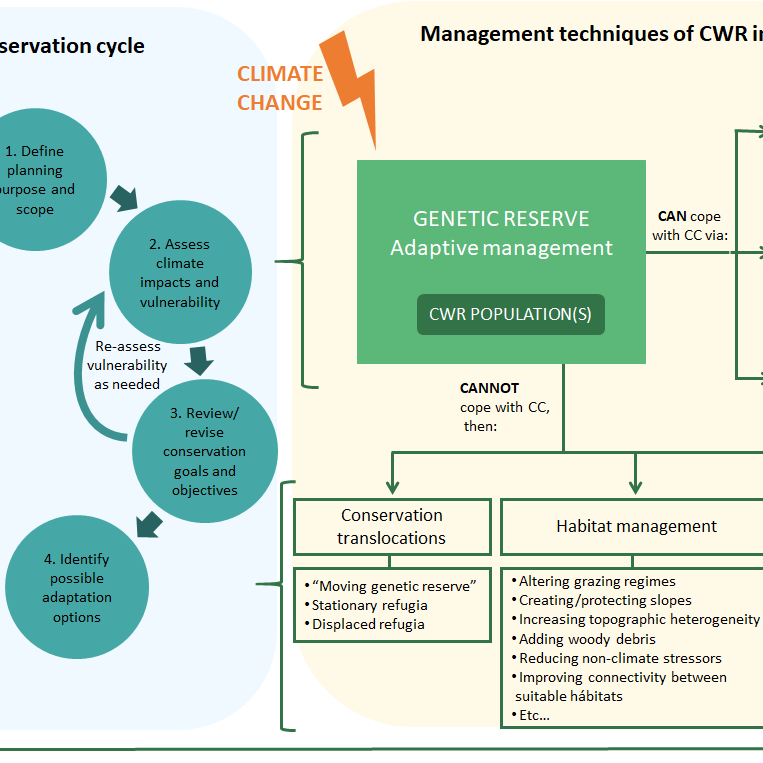Management for climate change
Climate change has already observed negative impacts on natural systems, at scales from genes to populations, species, communities and ecosystems, and further change is predicted for the foreseeable future, causing considerable disturbance to regional and seasonal patterns of precipitation and increase of frequency and intensity of extreme climate events (IPPC, 2019)
There have been reported range shifts towards the poles or upwards in altitude with gradually earlier spring events, loss, expansion, relocation and fragmentation of habitats, disruption of biotic interactions, and changes in distribution, abundance, phenology and physiology of a wide range of species. While acknowledging that CWR diversity is under threat from climate change, CWR themselves also offer a critical means of mitigating the predicted impact of changes in climate on crops.
Those populations that are unable to respond to changes in climate are increasingly at risk of reduced fitness and of extinction unless we interfere. Phenotypic plasticity and migration permit more immediate responses to environmental changes but, in the long term, an adaptive evolutionary response (or evolutionary rescue) may be needed in order to avoid or limit the negative consequences of maladaptation under changed environmental conditions. Maladaptation to changing climates not only decreases species’ productivity and health but also aggravates the decline of small populations.
